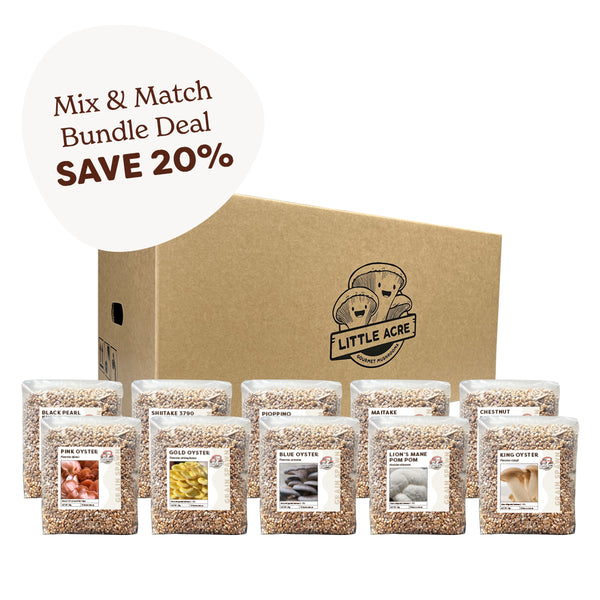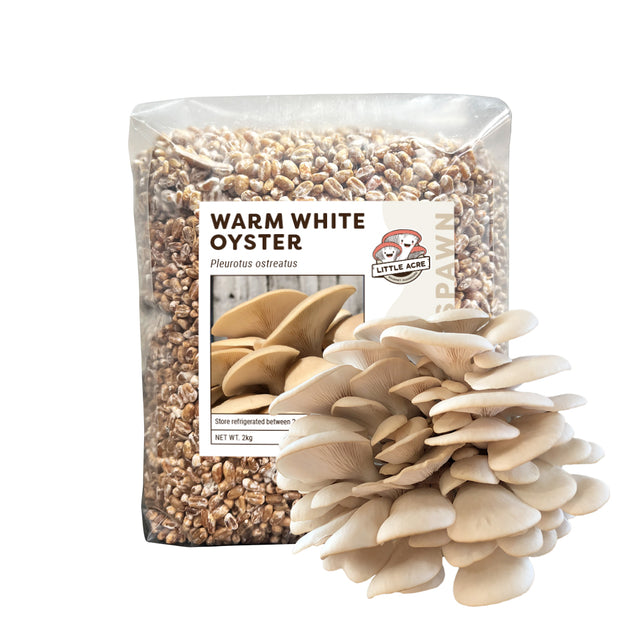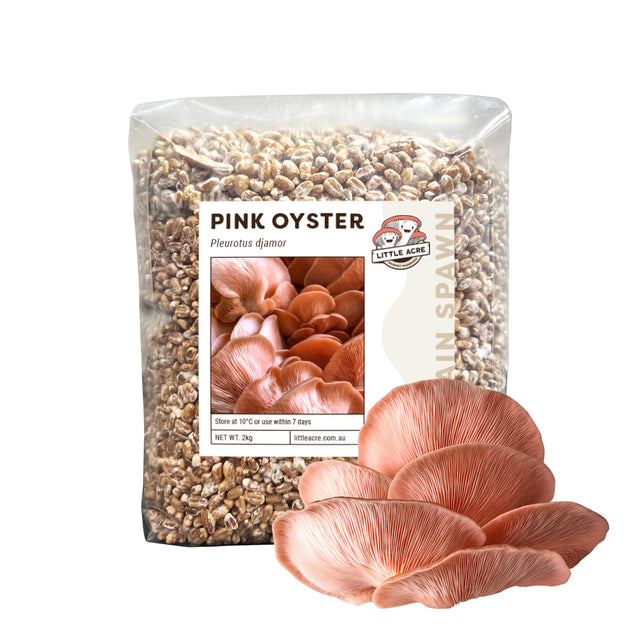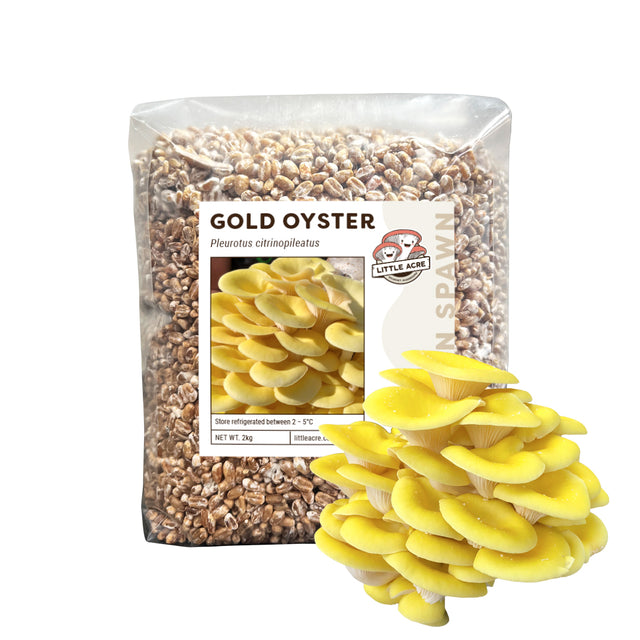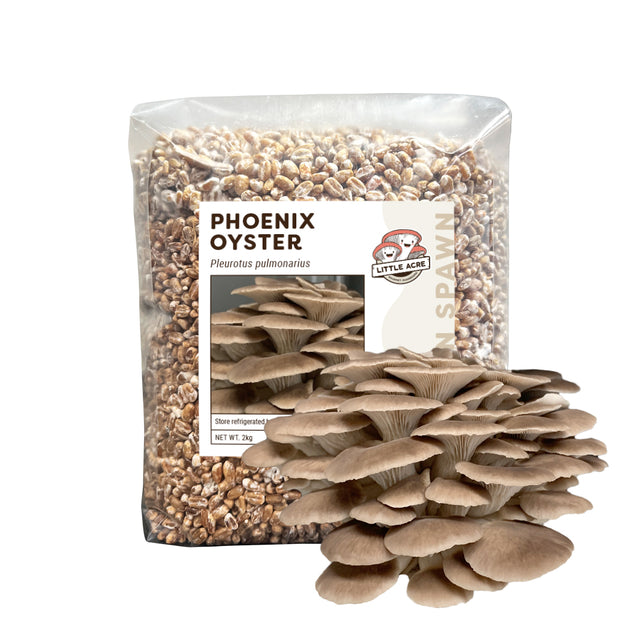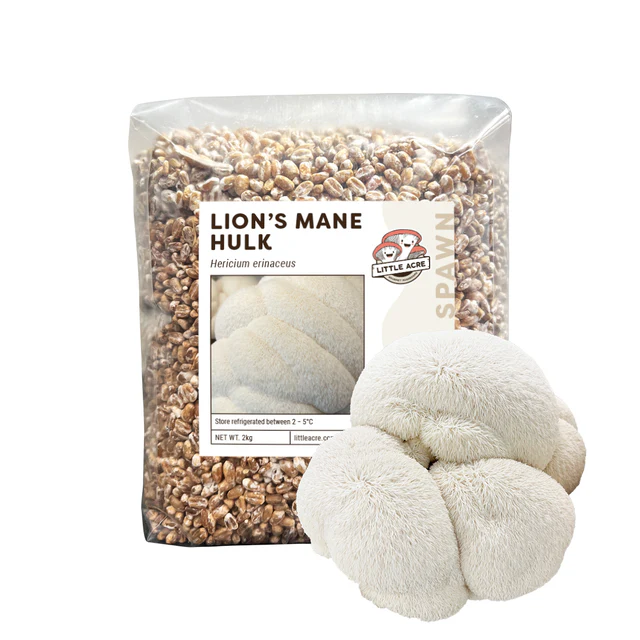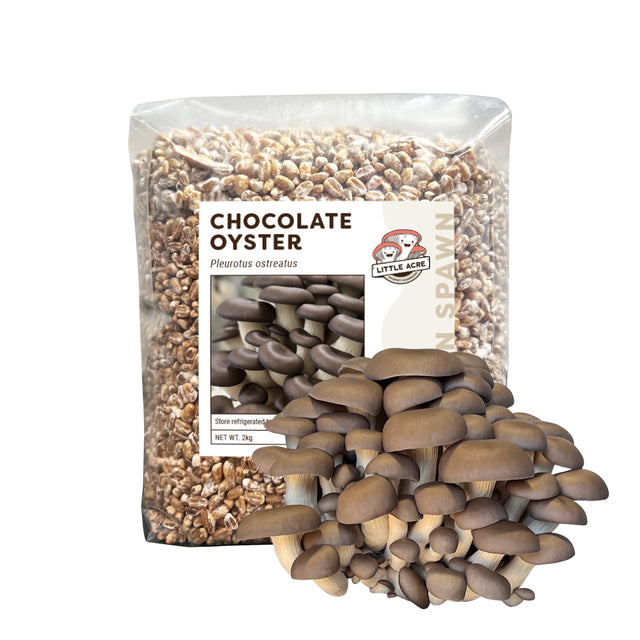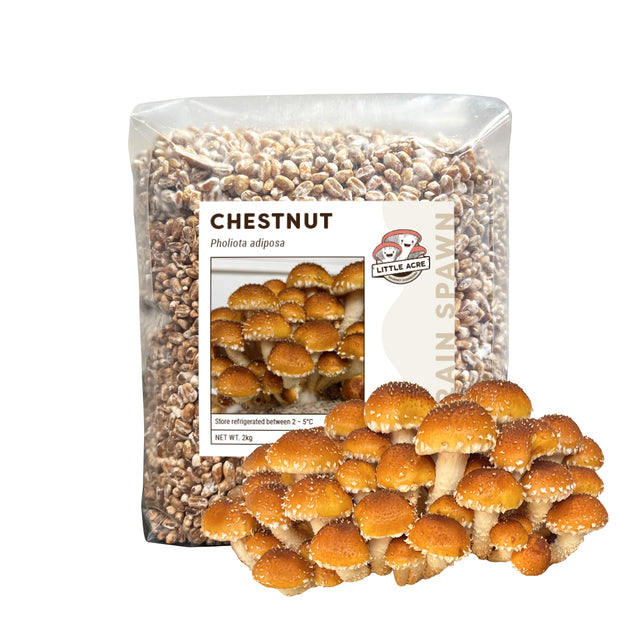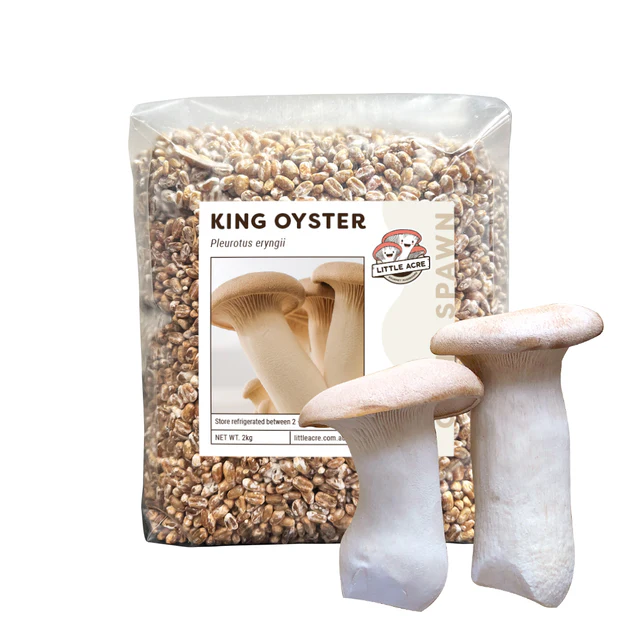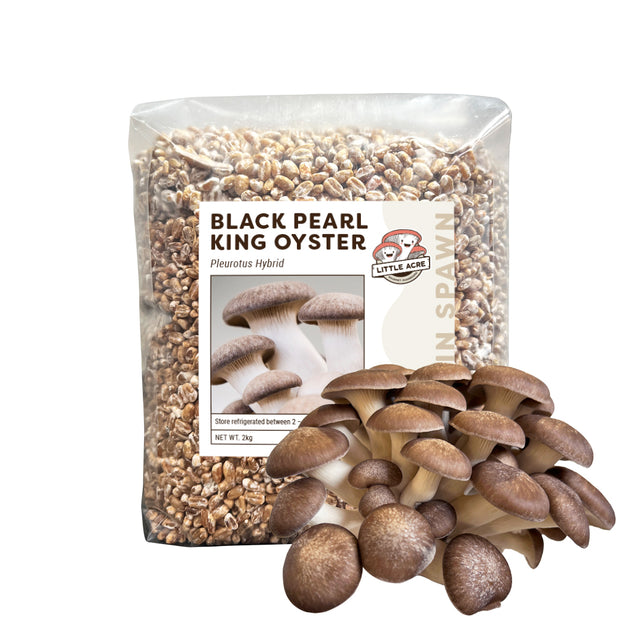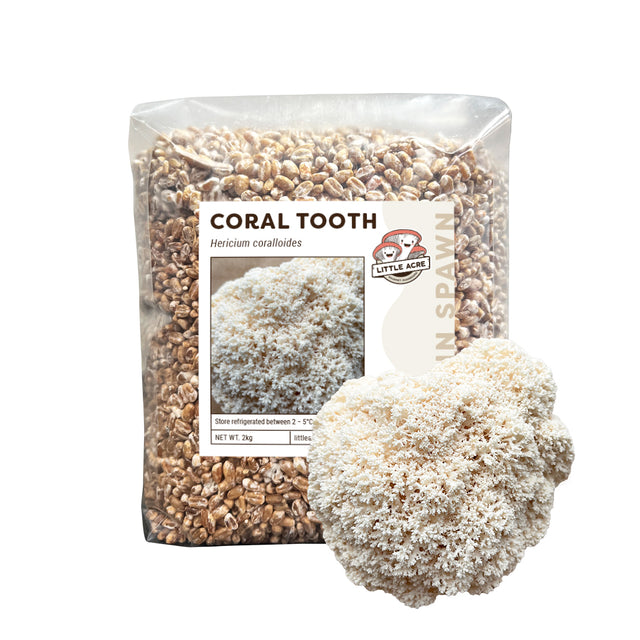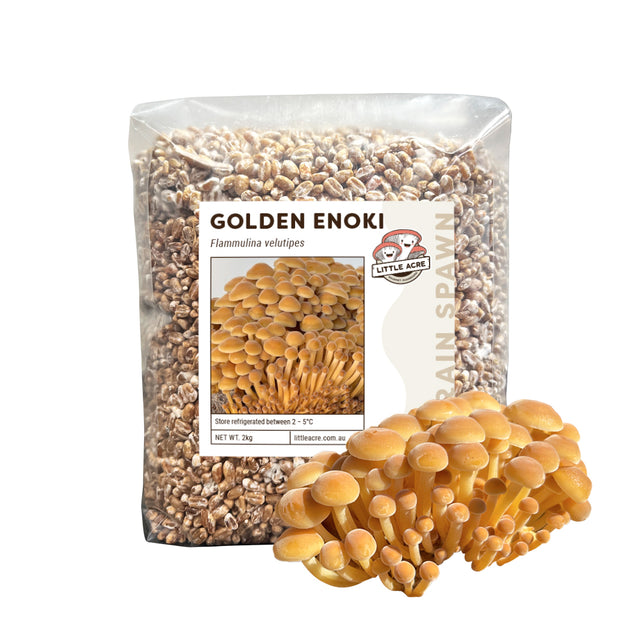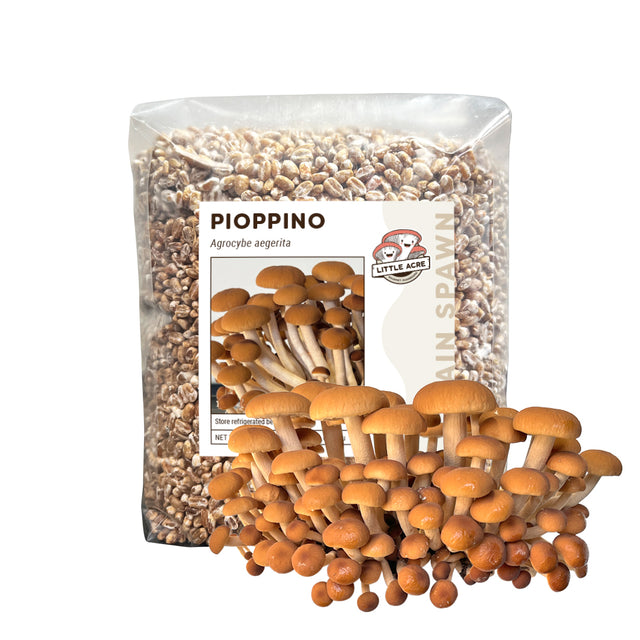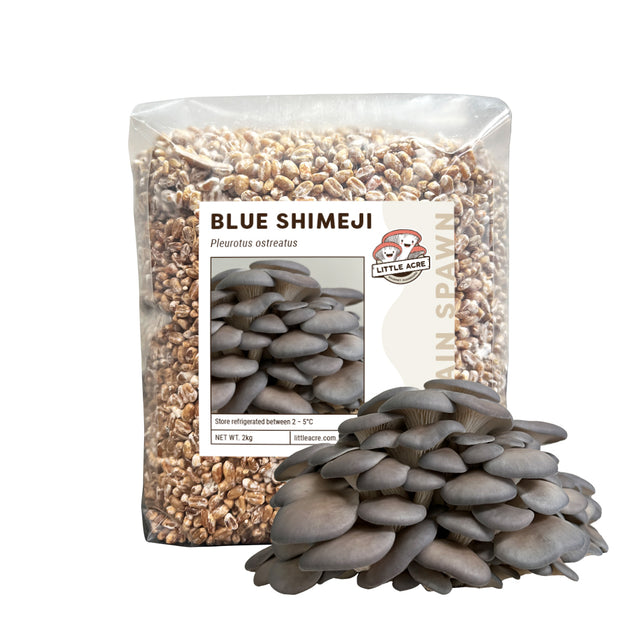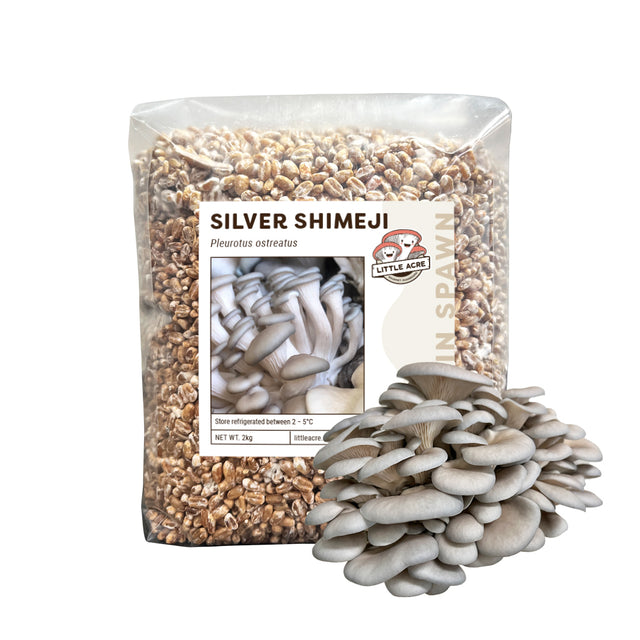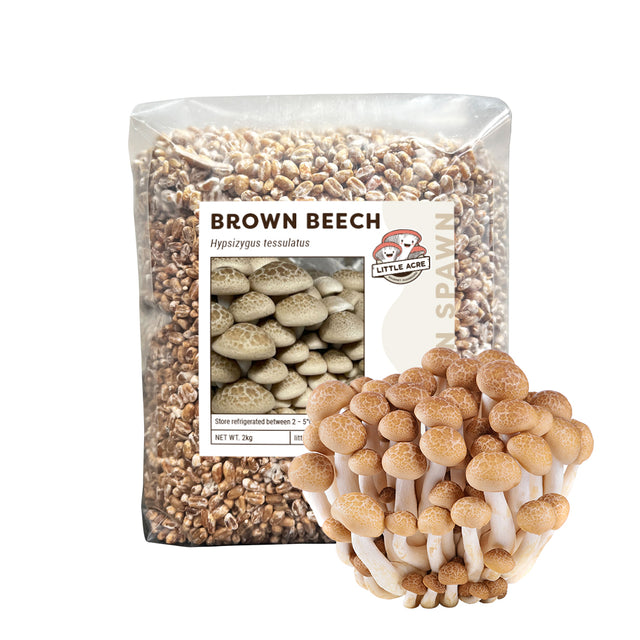How much grain spawn you need to use to inoculate your substrate is dependent on a couple of factors:
-
What species are you growing?
-
Are you using pasteurised or sterilised substrate?
-
Do you have a very clean work environment? For example, are you inoculating in a cleanroom or just in the open air at your house?
Our general rule is that the better your technique and processes are, the less grain spawn you need to use. In theory, a single grain coated in mycelium will eventually colonise a completely sterile substrate, but adding many grains will colonise the same substrate much faster.
The average inoculation rate falls between 2-10% spawn weight to final weight (wet weight) of substrate.
Sterilised substrate:
For substrate which has been sterilised in a pressure vessel and inoculated in a cleanroom environment in front of a laminar flow cabinet you can use a 2% spawn rate with confidence. For example:
For a 2.5kg bag of Master’s Mix substrate we would recommend using 50g of spawn per bag.
Super pasteurised substrate:
For substrate which has been heated with steam to a very high temperature (95 degrees celsius plus) for several hours and will be inoculated in a very clean environment such as a still air box or enclosed tent we recommend a spawn rate of between 2-5%. There is still a chance of bacterial contamination present in the substrate and some airborne contamination so a high spawn rate will help give the mycelium the advantage. For example:
For a 2.5kg bag of Master’s Mix substrate that has been steam treated without pressure we would recommend using approximately 100g of spawn per bag.
Pasteurised substrate:
For substrate which has only been pasteurised, for example sugarcane mulch or straw soaked in a lime bath or hot water, and will be inoculated in the open air (any air which is unfiltered through HEPA filters) we recommend a much higher spawn rate as your risk of contamination from airborne moulds or residual mould spores in the substrate is far greater. We would recommend a spawn rate of 10% in this case. For example:
For a bucket or mushroom bag filled with 2.5kg of pasteurised substrate we recommend using 200g - 250g of grain spawn.
These are guidelines only and you may find with your own experimentation and trials that you are able to decrease the amount of grain spawn you need to use. However, we recommend using the above as a starting point.

